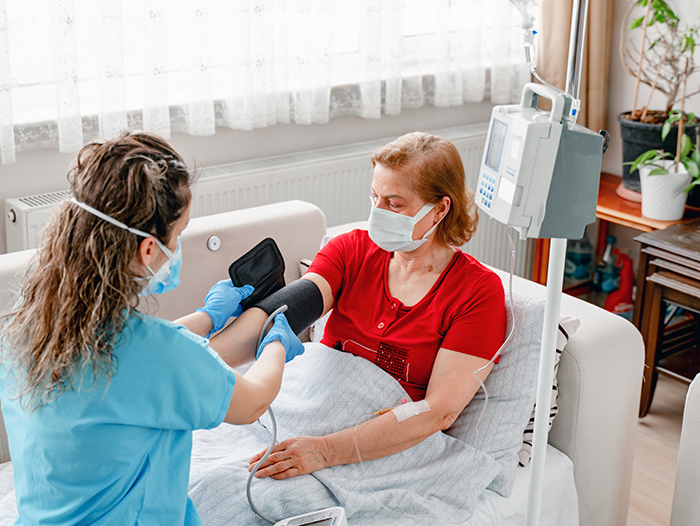Auto logout in seconds.
Continue LogoutRemote patient monitoring (RPM) use is rapidly increasing. The worldwide RPM market is estimated to hit $1.73 billion by 2027.1 The market research company eMarketer estimates that 70.6 million patients in the United States, or 26.2% of the population, will use RPM tools by 2025.2 Market factors driving this growth include an aging population, an increase in chronic disease, a decentralizing care delivery model, and a shifting policy and reimbursement landscape. But we’ll likely see workforce shortages, capacity management, and competitive positioning continue to accelerate RPM uptake. The clinical workforce is at a crisis point with high turnover rates driven by burnout, feelings of disrespect, and concerns about workplace safety. In addition to dealing with workforce challenges, healthcare leaders are also confronted with shifting consumer preferences. Care decisions are no longer shaped primarily by referrals, and leaders need to find ways to appeal to the 46% of specialty care patients who are self-referring for care.3
RPM is often employed to monitor and manage chronic conditions such as diabetes and hypertension. RPM for chronic care management isn’t new (Advisory Board published on it nearly a decade ago). It extends care management services beyond office walls, allowing patients to maintain access easily with their providers. This continuity of care is an effective way to increase patient engagement and adherence to treatment. Real-time data enables providers to intervene at the first sign of abnormalities, ultimately reducing the number of emergency department visits and hospital readmissions. The combination of better access and proactive intervention leads to better clinical outcomes and lower total costs.
We are increasingly seeing RPM as an emerging core competency for comprehensive service lines. Four areas where RPM is having an impact on specialty care today are detailed below.
Don't miss out on the latest Advisory Board insights
Create your free account to access 1 resource, including the latest research and webinars.
Want access without creating an account?
You have 1 free members-only resource remaining this month.
1 free members-only resources remaining
1 free members-only resources remaining
You've reached your limit of free insights
Become a member to access all of Advisory Board's resources, events, and experts
Never miss out on the latest innovative health care content tailored to you.
Benefits include:
You've reached your limit of free insights
Become a member to access all of Advisory Board's resources, events, and experts
Never miss out on the latest innovative health care content tailored to you.
Benefits include:
This content is available through your Curated Research partnership with Advisory Board. Click on ‘view this resource’ to read the full piece
Email ask@advisory.com to learn more
Click on ‘Become a Member’ to learn about the benefits of a Full-Access partnership with Advisory Board
Never miss out on the latest innovative health care content tailored to you.
Benefits Include:
This is for members only. Learn more.
Click on ‘Become a Member’ to learn about the benefits of a Full-Access partnership with Advisory Board
Never miss out on the latest innovative health care content tailored to you.

